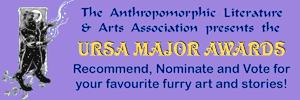Some
animals have diets that are extremely strict, to the point where eating
something outside of that diet could cause illness or death outright.
Some
animals’ diets are a little looser, and they can essentially eat nearly
anything that fits into their mouth and be just fine for it in the long run.
Disregarding
moral objections, I think we can generally agree on a few natural dietary
habits of animals in the wild. They are either Carnivores (meat eaters),
Herbivores (plant eaters), or Omnivores (those who get pizzas with everything
on it). This is one of those
long-standing rules of nature that we’ve been taught ever since our first
biology class.
 |
| Sadly, pandas as a species never got the memo about bamboo being a poor energy source for them... |
There
is one question, however, that our biology classes failed to answer:
What
does an omnivore do when he has to write for a carnivore or an herbivore?
The
answer varies quite a bit, in truth, but some of the results might surprise
you. I’ve read stories where rabbits go with their lion friends to restaurants
and get chicken fingers just like anybody else. I’ve also read stories where
rabbits would get sick after eating red meat by accident, or about tigers who
had to resist the urge to eat their smaller, fluffy, meat-filled friends.
To
be honest, it can be rather hard sometimes to create believable diets for
anthropomorphic animals. For one, these creatures don’t even exist in the real
world, so all we have to go off of for their dietary constraints are the
animals they’re based on. If a species
evolved enough to walk on two legs, talk, and drive a car, then who’s to say
their diets didn’t evolve along with them? Aside from that, writing a character
who can only eat one type of food can sometimes, frankly, be a bit boring and
strange to think about. Here in America,
it’s almost a national iconic scene to picture farmers hard at work in the
fields all day and coming inside at sundown for a hearty meal of meat and
potatoes. It would probably boggle the
mind of some people to switch out ‘meat and potatoes’ for ‘lettuce and
cucumbers’.
In
the end, because humans tend to be the creatures writing our fiction, the
protagonists in our fiction tend to think like humans do, and that includes
eating like them as well.
I
don’t have any answers for which way of writing is best. In my own writing,
I’ve written animals that are against dietary type and animals that stick to it
like a religion. However, for those who think that writing meals for carnivores
and especially herbivores is boring and requires very sterile descriptions of
salads, I would like to direct you to Mr. Brian Jacques, the writer of the Redwall
series.
I
loved Redwall when I first started reading it, and I fell out of love
with it as the series went on and I started liking some of the ideas and plots
less and less. No matter how I felt about the stories themselves, though, there
always remained one constant:
Brian
Jacques is a master of writing feasts.
I
can’t recall a single meal of his that did not make me hungrier after reading
it. His descriptions of all-berry pastries and wines and beautiful dishes of
fruits and vegetables defy expectations. They are filled with so much flavor,
scents, and colors, and the characters, usually mice and shrews, are enjoying
themselves so much that it’s like a Thanksgiving dinner being experienced for
the very first time.
Just
read this excerpt about the spread laid out for a feast at Redwall Abbey from Mattimeo:
“Salads of twelve different types, ranging from beetroot to radish, right through many varieties of lettuce and including fennel, dandelion, tomato, young onion, carrot, leek, corn – every sort of vegetable imaginable, cut shredded, diced or whole. These were backed up with the cheeses, arranged in wedge patterns of red, yellow and white, studded with nuts, herbs and apple. Loaves were everywhere, small brown cobs with seeds on top, long white batons with glazed crusts, early harvest loaves shaped like cornstocks, teabread, nutbread, spicebread and soft flowerbread for infants. The drinks were set out in pitchers and ewers, some in open bowls with floating mint leaves, October ale, fresh milk, blackcurrant wine, strawberry cordial, nutbrown beer, raspberry fizz, elderberry wine, damson juice, herb tea and cold cider.”
It
continues to go on to describe the cakes and desserts to follow, but I had to
stop myself there as my very eyes were watering with desire for this food.
The
feasts of Redwall sometimes include fish, shrimp, or other seafood (there are
often a variety of animals present in Redwall), but they’re just as often like
this, listing line after line of food that would please the pallet of any
herbivore. It’s really a great show of what can be done when a writer treats
the diets of his characters with respect and joy.
Of
course, not every story needs to spend a crazy amount of time talking about the
food the characters eat. Still, having some level of consistency and respect to
the idea that these are very different creatures that we are following is
always appreciated and helps to make the world feel more real and complete.
What
do you readers think? Do you prefer anthropomorphic animal characters who eat
strictly like their real life counterparts, or is having a bit more open of a
diet more fun to read about?
Now,
if you’ll excuse me, I have to go look up what ‘white batons with glazed
crusts’ are and how I can get my hands on one…
Happy
reading, all!
-Chammy
Currently
Reading:
The Last Wild by Piers Torday


